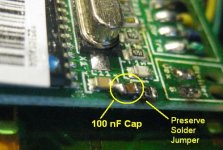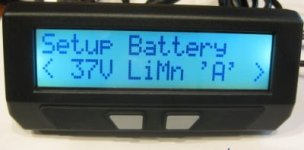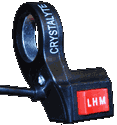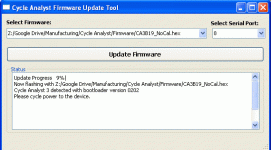Throttle ramping and min/max voltage range scaling to match throttle and controller voltage ranges can improve operation in fairly obvious ways, but it might be useful to take a quick 30,000ft view of how the various CA throttle modes can give more refined operator control.
Open Loop Throttle
The illustration below shows the CA in
Pass-thru mode - similar in concept to directly connecting the throttle to the controller except that the V3 may apply some Vin-to-Vout scaling and Vout ramping. This is an open loop control configuration where the control voltage is applied to the controller and transformed by the controller/motor curves to directly affect the final motor output. For controllers/motors with curves possessing steep steps in input/output transformation, a small rider throttle change can affect a large alteration in motor power.
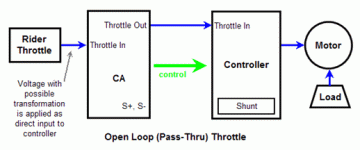 Closed Loop Throttle
Closed Loop Throttle
This second illustration shows the CA in
Current Throttle mode. This is a closed loop control configuration where the rider throttle is not passed through to the controller but rather sets a target output for the CA to achieve - the CA provides the controller throttle and receives feedback from the shunt to determine how well it has done in achieving that target. It then adjusts the controller throttle, etc in a closed loop to cause the output to automagically track the desired rider throttle input. Because the load is reflected through the motor back to the shunt, the CA will maintain the target current regardless of changes in terrain.
In this mode any unpleasant non-linearities in the controller/motor curves are of little consequence as the CA can rapidly and precisely adjust to get the desired output - this task is no longer the responsibility of the rider. Some controller/motor curves may have strongly non-linear characteristics that require small adjustments to the CA control mechanism, however these are simple gain adjustments to prevent 'hunting' or oscillation, not detailed configuration of input/output throttle curve mapping.

In this Current Throttle example, if
Plim->MaxCurrent is set to 50A then WOT is 50A. Assuming the rider throttle is more or less linear, adjusting the throttle to 10% rotation yields a predictable controller output of 10% of 50A or 5A.
The closed loop illustration can be redrawn for
Power or
Speed Throttle with appropriate alterations to the source of the feedback. The table below shows the available throttle types - all but
Pass-thru are closed loop. The columns show the physical metric the CA uses for feedback and the relevant parameters for each type of operation. To get the smoothest and most consistent operation it may be best to set the 'other' limits as loosely as possible (i.e. as true maximum safety limits) so only the single thottle limiting parameter is generally in play.
It is important to note that the CA Speed Throttle is completely different than the Infineon throttle logic which is often misnamed as a 'speed throttle'. The CA Speed Throttle is a true closed loop control system that measures the bike speed and corrects for variations. In contrast, the Infineon throttle uses open loop control to vary phase PWM duty cycle according to the input throttle voltage without regard for directly measured bike or motor speed; this results in varying speed with load and terrain.
 Aux POT (Vpot) Input
Aux POT (Vpot) Input
The
Aux POT input (aka
Vaux,
Vpot) operates in a fashion similar to the rider throttle (
ThI) in that an applied voltage limits the associated parameter to some percentage of the configured maximum value. The
CA PCB provides three pads for
Aux POT:
+5v,
Gnd, and
POT. This makes it straightforward to connect a potentiometer that will provide 0-5v to the
POT input. For example, if
Plim->MaxCurrent=60A,
Aux->AuxFunct=AmpsLim,
Vaux input voltage (min,max) is (0v,5v), and the POT input is adjusted to 2.5v (50% of 5v), then the controller will be limited to 50% of 60A or 30A. In lieu of a potentiometer, a few resistors/trimpots and an on-off-on SPDT switch can be used to provide the familiar
LMH switch functionality.
View attachment 2
Throttle Scaling
By setting both
Aux->AuxFunct and the
ThrI->CntrlMode to be associated with the same limiting parameter, the throttle will scale against the output of the Aux POT feature instead of the Limiting Parameter directly. This is shown in the last column of the table above.
For example, assuming
Vbatt = 60v and
Plim->MaxCurrent = 50A then
Plim->MaxPower = 3000W . Because of
Vbatt, the respective max current/power limits should have essentially identical effects, but the following example shows this may not be the case.
- The question:
What are the throttle response curves for an Aux POT 3-position LMH switch with values of 20%, 70%, and 100%?
Case A: DIFFERENT LIMIT PARAMETERS - The throttle limits current and Aux POT limits power. As shown below, when set to different Limiting Parameters, the throttle and Aux POT limits operate independently causing the throttle to try to follow the same slope curve ( 0 to
Plim->MaxCurrent = 50A) in each switch setting. However, where Aux POT is less than 100%, the AUX Pot limit appears as a limiting ceiling where advancing the throttle has no effect. In these cases the diagonal curve flattens for the remainder of the throttle range of motion yielding a 'dead zone' in the same manner as legacy CA V2 limiting.
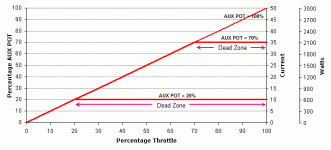 Case B: IDENTICAL LIMIT PARAMETERS - Both the throttle and Aux POT limit current.
Case B: IDENTICAL LIMIT PARAMETERS - Both the throttle and Aux POT limit current. The throttle is not limited by
Plim->MaxCurrent but rather by
(Plim->MaxCurrent) x (percentage of AuxPOT). As shown below this has the effect of scaling the entire throttle range of motion from 0 to Aux POT (switch) limit, eliminating dead zones. The WOT current limits are identical to those of Case A (10A, 35A, 50A), however, the throttle curves for Aux POT less than 100% are dramatically different, showing a uniform linear relationship between throttle and current with no dead zones. This scaling is similar to that of the Infineon controller 3-speed switch.
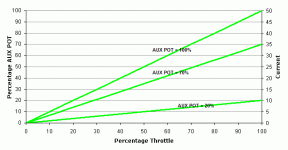
In Case B, the combined effects of the CA closed loop logic and the expanded range of motion make small speed adjustments at low power very much less challenging than in the open loop direct connect approach.


